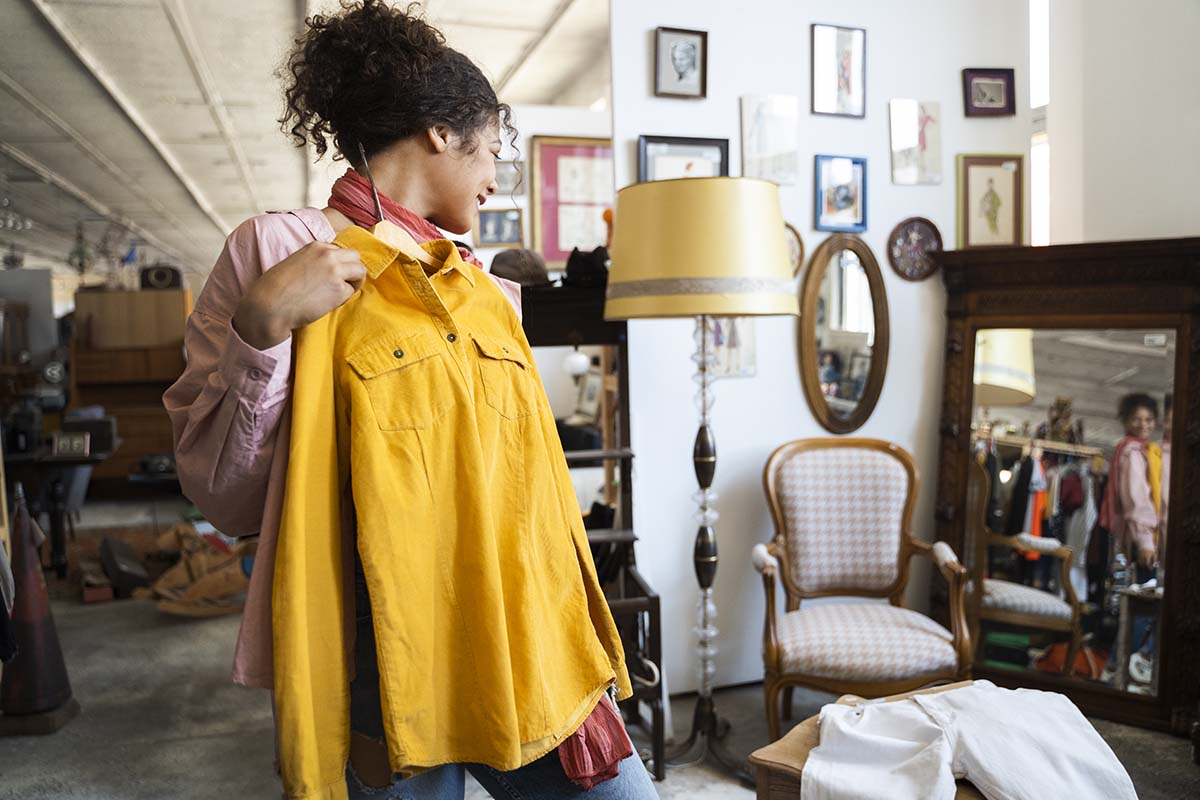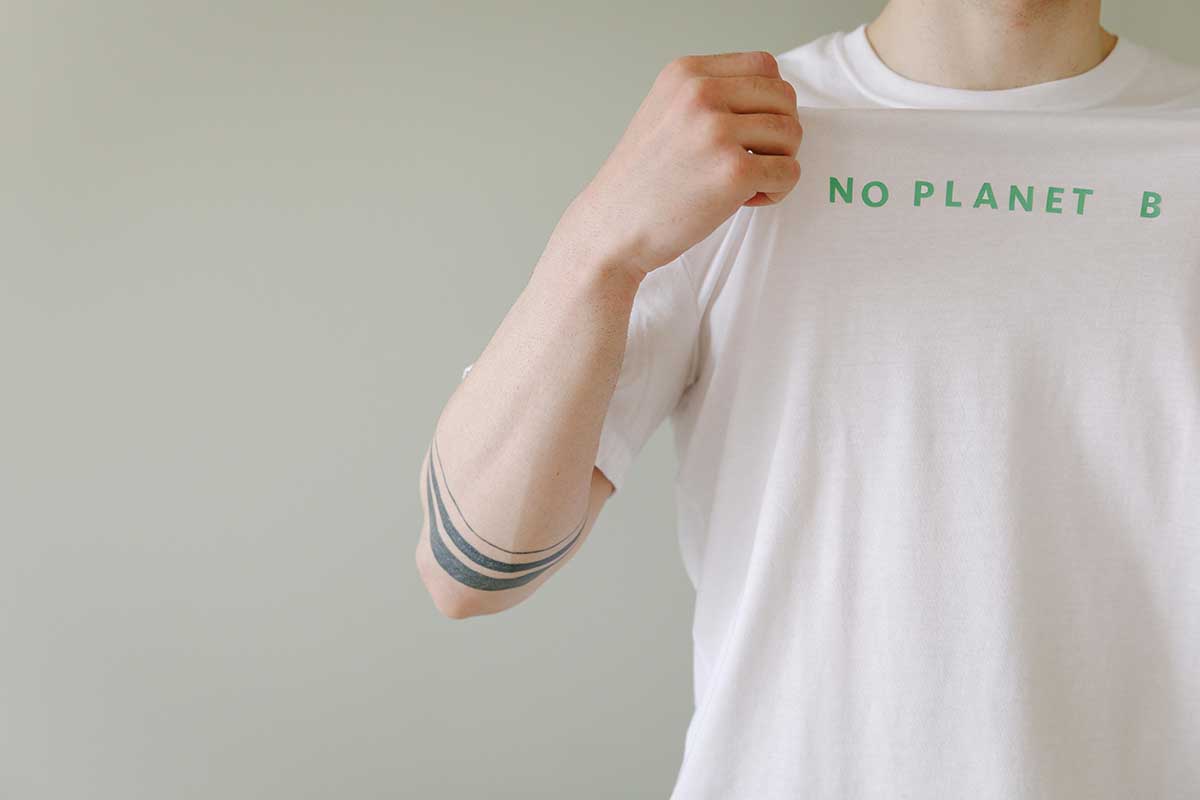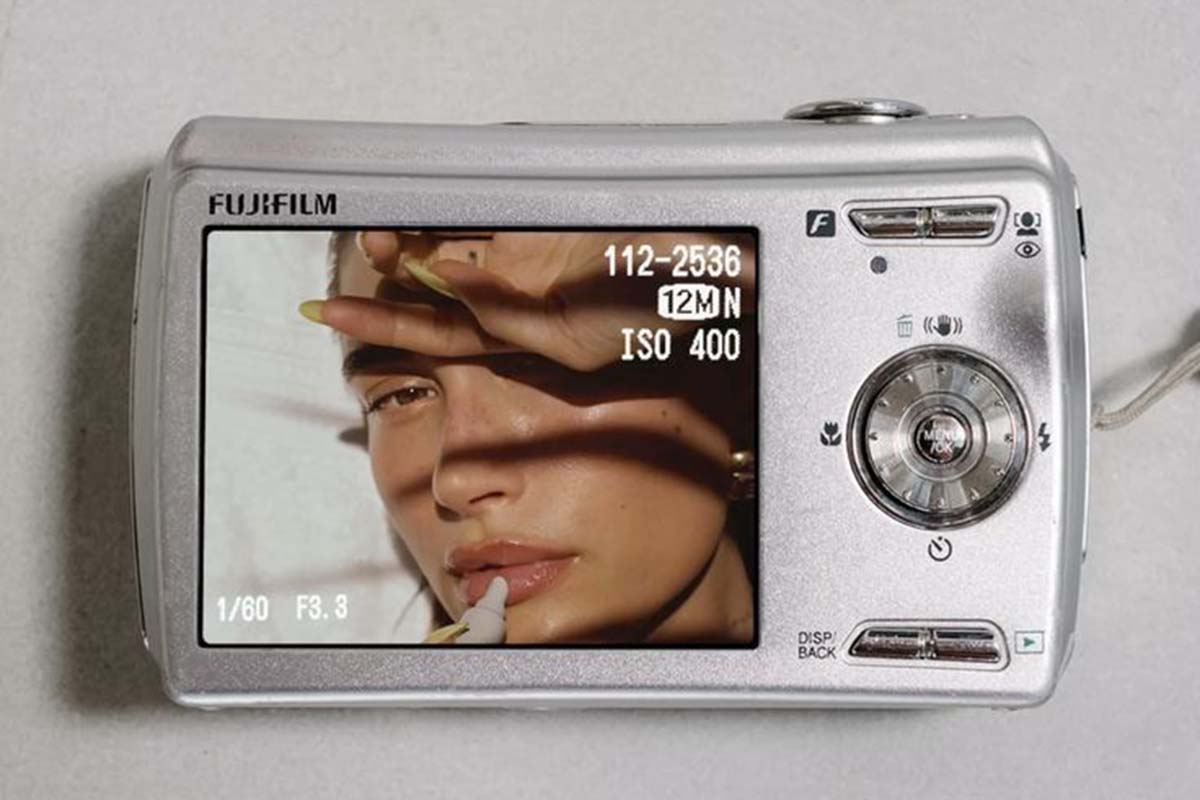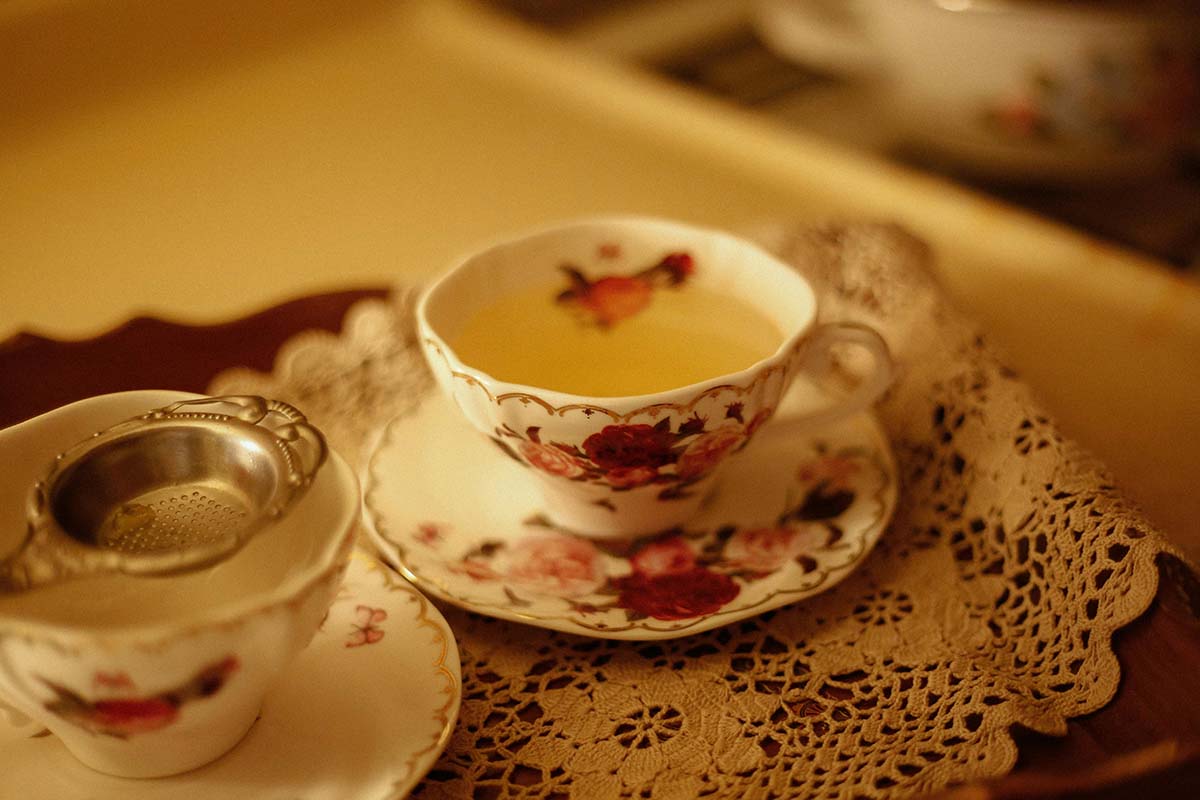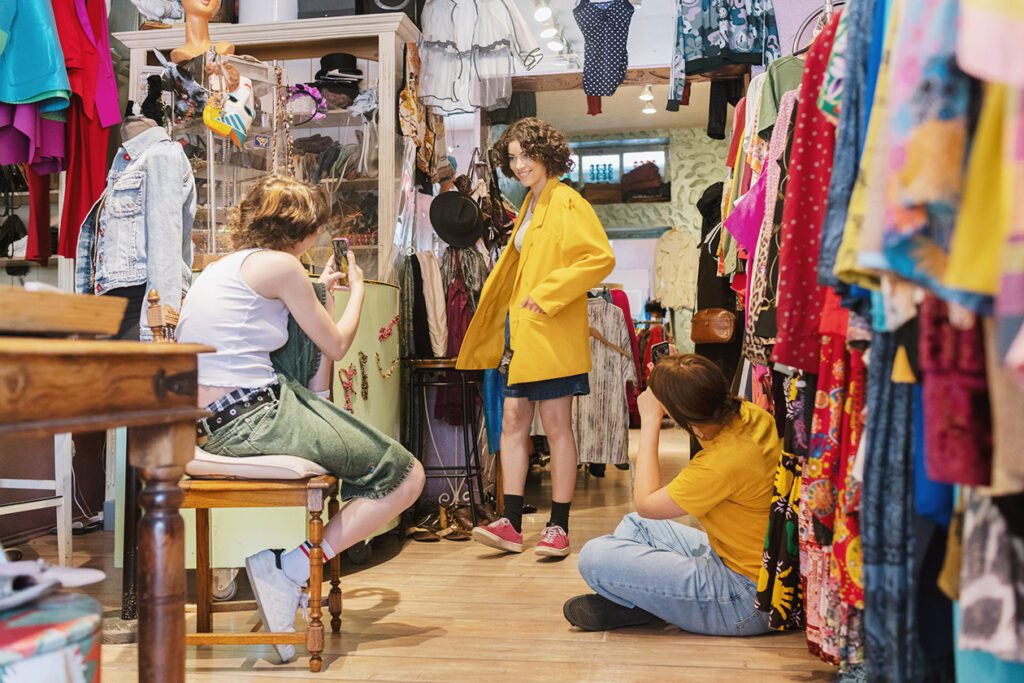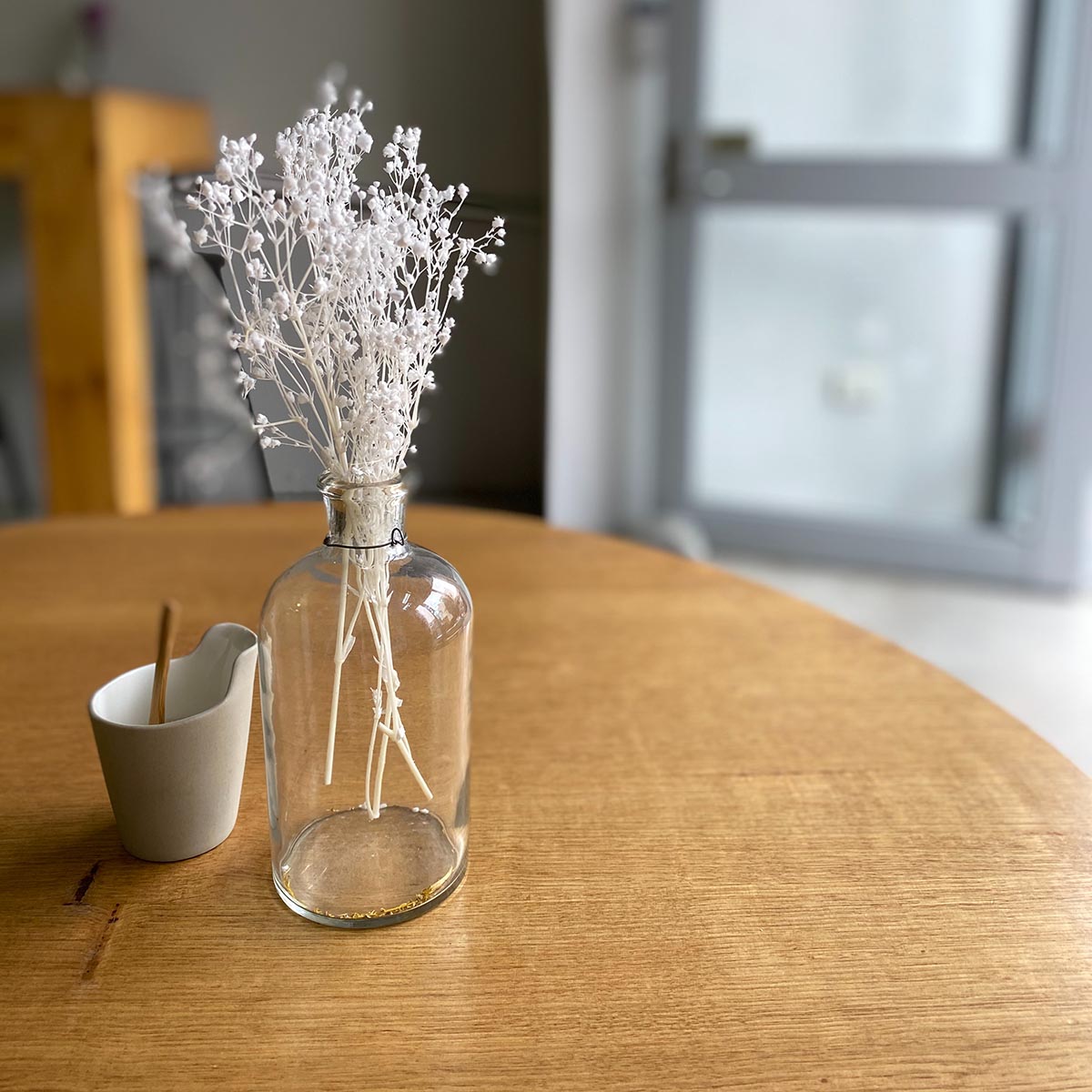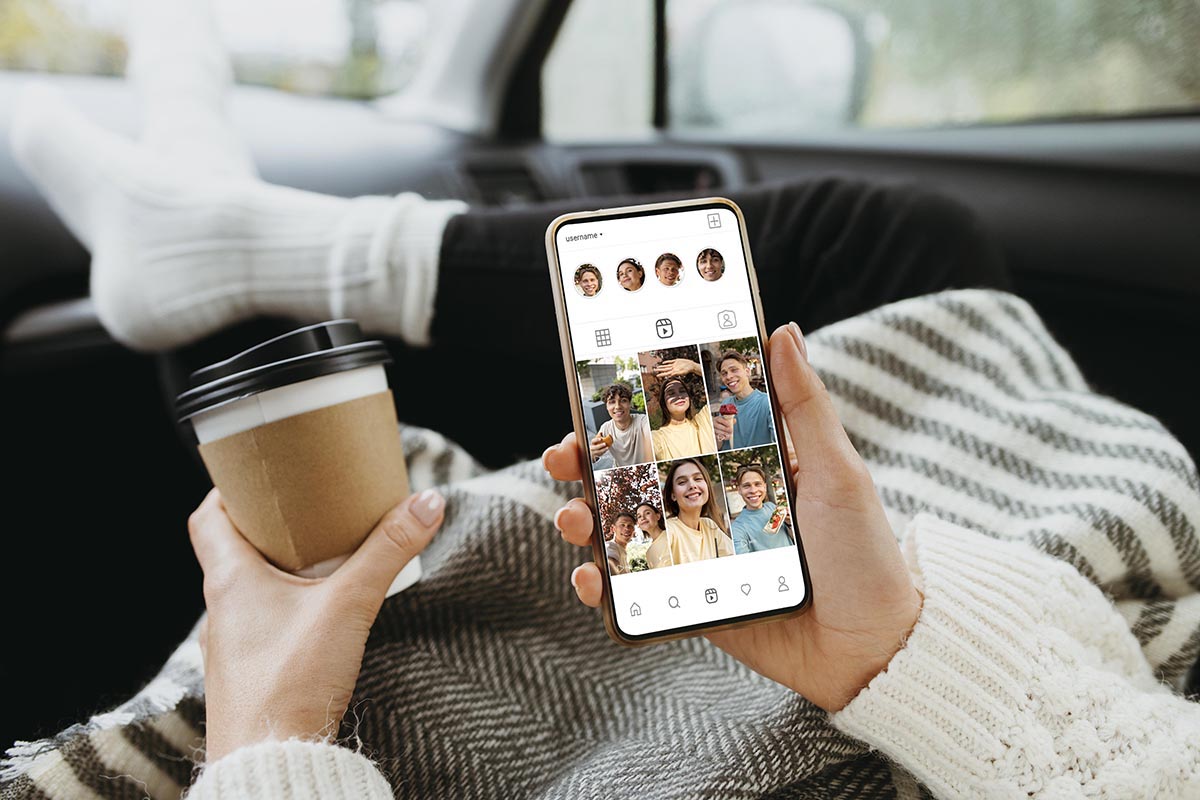Gen Z Vintage Trend: Escaping Minimalism for Soul and Story
✨Key Points
Rebellion Through Style. Gen Z rejects mass-market sameness, turning to vintage fashion and décor as a way to express individuality and authenticity.
Sustainability as Identity. The Gen Z vintage trend isn’t just about aesthetics — buying pre-loved items is a conscious stand for sustainability and eco-awareness in a fast-fashion world.
Nostalgia and Comfort. From dopamine décor to 2000s fashion, vintage gives Gen Z emotional connection, warmth, and a sense of belonging in uncertain times.
Why is Gen Z all of a sudden obsessed with vintage?
They just got distracted on their way to IKEA.
Kidding. Well… almost true.
The truth is, everyone is tired of mass market.
Gen Z hates seeing the same style and aesthetics from the same online stores, moles and Pinterest minimalism aesthetic.
Vintage is their way to say “NO” to fast fashion and stand out from the crowd and share their values with the world.
Who needs low-quality, mass-produced things when you can find something unique with history?
Plus, it might even be cheaper — and better quality.
And it’s not just about clothes.
The love for vintage now touches everything — from dopamine-filled interiors with bright retro furniture to everyday fashion choices that feel personal and real.
Somewhere between the rows of flat-packed furniture, minimalist lamps, and fake plants, Gen Z took a turn — right into the world of vintage.
And maybe that’s the most beautiful distraction of all.
Because what started as a casual trend — a few thrifted sweaters and nostalgic Polaroid filters — evolved into something much deeper: the Gen Z vintage trend, a true cultural shift.
Tired of the Mass Market
Same stuff in every store — boring. Vintage is Gen Z’s way of saying “no” to fast fashion and standing out from the crowd.
A unique piece with history for the same price? Yes, please.
If you ask a Gen Zer why they love vintage, they probably won’t say, “Because it’s cheaper.” They’ll say, “Because it’s real. It’s unique.”
The world they grew up in has been saturated with sameness.
They’ve seen enough loud logos and influencer closets filled with identical brands to last a lifetime.
Fast fashion giants release over 50 micro-collections a year, algorithms dictate what’s trending, and suddenly every outfit — and every apartment — starts to look like the same Pinterest board.
It’s not that Gen Z hates modern design.
They just crave authenticity — the feeling that something was made with care, not copied a thousand times.
A thrifted leather jacket, a hand-painted mug, an old dresser with a few scratches — these things have soul.
They carry history, personality, imperfection.
And that’s exactly what mass production can’t replicate.
In a way, vintage became a quiet protest — a gentle rebellion against sameness.
A way of saying, “I don’t want to be a copy of someone else’s feed.”
It’s rebellion — but soft, aesthetic, and deeply emotional.
Caring About the Planet: The Conscious Choice
Gen Z didn’t just fall for the vibe — they fell for the values behind it.
They’re one of the most environmentally aware generations in history.
According to recent surveys, over 70% of Gen Z consumers say sustainability influences their purchasing decisions.
The rise of the Gen Z vintage trend comes from what they’ve seen — overflowing landfills, viral documentaries about textile waste, and the harsh reality that cheap fashion costs the Earth more than it costs their wallets.
So when they choose a pre-loved piece, it’s not only about style. It’s about purpose.
Every secondhand sweater means one less item in a landfill.
Every repurposed table means one less tree cut down.
Every pair of vintage jeans keeps thousands of gallons of water — the amount needed to make one new pair — from being wasted.
It’s a small action, but multiplied by millions, it becomes a statement: we care.
And that’s what makes this generation powerful.
Their choices are intentional.
Every aesthetic decision is also an ethical one — a quiet reminder that beauty and responsibility can coexist.
Cozy With a Story
The vintage love story didn’t stop at fashion — it moved straight into interiors.
Searches for phrases like “vintage dresser,” “retro lamps,” and “dopamine décor” have skyrocketed in the past two years.
TikTok alone has over 500 million views under the hashtag #DopamineDecor — a trend built around creating spaces that spark joy, comfort, and emotional connection rather than minimalist perfection.
Gen Z homes are no longer beige boxes.
They’re warm, colorful, layered, and filled with soul.
You’ll find mismatched vases, framed vintage posters, secondhand mirrors, and old IKEA classics mixed with modern finds.
Each piece tells a story — not of trends, but of personality.
After all, this generation grew up online.
Their digital worlds might be curated, but their real-life spaces?
They want them authentic — cozy, imperfect, and full of emotion.
Vintage interiors give them that feeling.
They turn apartments into sanctuaries — safe, expressive places where every object carries a little history and a lot of heart.
In a fast, unpredictable world, vintage gives something familiar to hold onto.
It’s the comfort of objects that have survived time.
The softness of nostalgia, even for decades you’ve never lived through.
Nostalgia for a Time They Never Lived In
There’s even a word for it — anemoia: the longing for a past you never experienced.
In a world of constant change, Gen Z finds comfort in the aesthetics of the ’90s and 2000s — the soft glow of camcorders, flip phones, low-rise jeans, chunky sneakers, and early internet vibes.
This generation grew up surrounded by technology that moved too fast, so they’re drawn to what feels slower, simpler, and emotionally grounded.
That’s why trends like Y2K core, retro tech, and analog photography have made such a massive comeback.
Streaming platforms are reviving early-2000s sitcoms.
Vintage Sony Walkmans and wired headphones are back on eBay Wishlist.
Even old-school digital cameras — once forgotten in drawers — are selling out across secondhand markets.
Vintage isn’t just an aesthetic here — it’s emotional time travel.
It brings Gen Z closer to a world they never lived in but somehow deeply miss.
It’s the warmth of the past in a future that often feels too fast.
And maybe that’s what makes the movement so powerful — it’s not just about nostalgia.
It’s about belonging to something timeless.
The IKEA Paradox
And here’s the irony: even IKEA couldn’t resist the vintage wave.
The very brand that built its legacy on clean lines and flat-packed modernity has now gone full circle — reissuing some of its most iconic designs from the past.
Collections inspired by the 1970s and 1980s, like the re-released Lövet table and Klippan sofa, are selling out fast.
So that trip to IKEA for a vintage dresser?
Not a joke anymore. It’s real life.
What once symbolized minimalism and mass production has become part of the nostalgia it helped create.
And that says everything about where culture is heading — back toward meaning, warmth, and individuality.
In short, Gen Z got “distracted” by their own values:
the wish to be unique,
love for the planet,
craving for coziness,
and a touch of nostalgia.
In a world full of sameness, the coolest trend isn’t about buying more — it’s about being yourself.
Because maybe the real vintage treasure isn’t a dresser or a jacket — it’s the feeling of finding something genuine in a world that forgot what that means.
Aesthetic Meets Emotion
At its core, this movement isn’t really about furniture or clothes.
It’s about emotion.
Vintage touches something deep inside us — that human need for connection and continuity.
When you hold a 1970s ceramic cup or wear a denim jacket from the ’90s, you’re holding someone’s story.
You’re connected to lives that came before yours.
And in a time when everything feels temporary — digital messages, fast relationships, viral trends — vintage offers permanence.
It says, some things are meant to last.
That’s a powerful message in an era obsessed with updates and upgrades.
The Gen Z Energy
Gen Z has this unique energy: part idealism, part curiosity, part quiet resistance.
They’re not afraid to mix a $5 thrifted find with a $200 designer piece.
They’ll pair a 2003 iPod with a brand-new iPhone just because they like the contrast.
They love irony, authenticity, and stories that make sense emotionally, not just visually.
For them, vintage isn’t a costume. It’s a way to express individuality — to say, I’m not trying to look perfect; I’m trying to look like myself.
And that mindset — that freedom to explore identity through aesthetics — is why vintage resonates so deeply with them.
The Lesson Hidden in the Trend
Maybe that’s the real reason vintage came back.
It’s not just about finding a rare jacket or a mid-century chair.
It’s about finding yourself — in colors, textures, and emotions that feel alive.
It’s about slowing down enough to notice the craftsmanship, the weight of real wood, the softness of old cotton.
About appreciating things that weren’t made to be replaced every season.
In the end, Gen Z didn’t just rediscover old stuff.
They rediscovered meaning.
The Full-Circle Moment
So yes — maybe they did get “distracted” on the way to IKEA.
But that detour turned into something much bigger: a cultural shift toward mindfulness, self-expression, and care for the planet.
It’s funny how trends work.
They start as aesthetics and end up reflecting the soul of a generation.
Today’s vintage obsession isn’t just about looking good — it’s about feeling connected.
And maybe that’s the real beauty of it: in a world of endless copies, authenticity becomes the most valuable thing we own.
So if you’ve been dreaming of a vintage interior, maybe it’s not just about design.
Maybe it’s about creating a home that feels like you.
Warm, imperfect, full of stories — and always evolving.
Because in a world of sameness, the coolest trend will always be one thing:
staying true to yourself.
